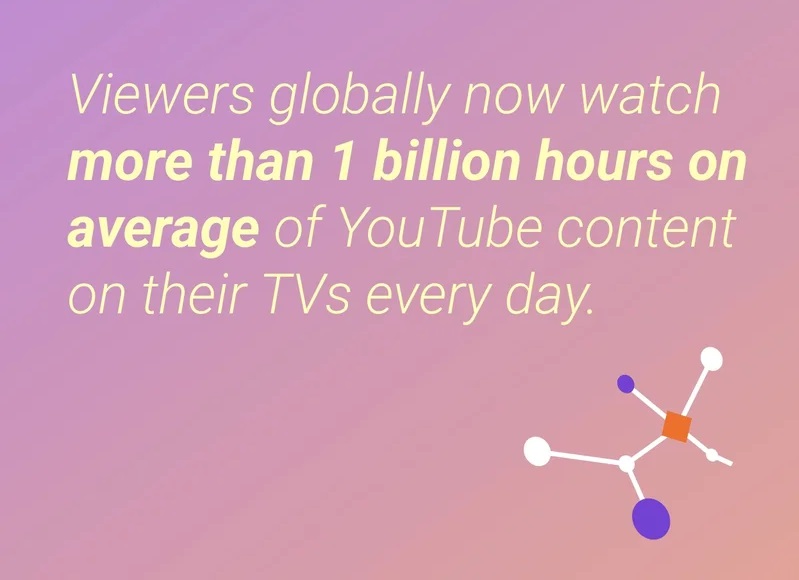
YouTube has released a host of new metrics about its services, including the fact that YouTube TV now has more than 8 million subscribers, making the vMVPD the fourth largest pay TV operator in the U.S.
The sub numbers were released in YouTube CEO Neal Mohan’s annual letter, which also reported that the YouTube Partner Program has paid more than $70 billion to creators, artists, and media companies between 2020-2023 and that more than 1 billion hours of YouTube is viewed on TVs each day. According to Nielsen's report on streaming in the U.S., YouTube was the leader in streaming watch-time for the past 11 months.
Mohan also wrote that Shorts is averaging over 70 billion daily views, and the number of channels uploading Shorts has grown 50% year over year.
"Since the very first upload, YouTube has opened up a new way to tell stories,” he wrote. “Suddenly anyone with a story could find an audience. And they did just that. People filmed in their kitchens, their bedrooms, and even their backyards. Along the way, they built communities that stretched across the globe.
“YouTube took this creativity one step further by making a big bet: we decided to share revenue with creators,” he added. “Since then, the growth of the creator economy has been incredible. More people created content on YouTube last year than ever before. And we’ve hit a new milestone. Today more than 3 million channels are in the YouTube Partner Program (YPP), which gives creators ways to earn money on YouTube. YPP has paid out more than any other creator monetization platform, and we paid over $70 billion to creators, artists, and media companies over the last three years.”
In the letter, he also argued that “generative AI is driving another evolution that raises critical questions about how we express creativity,” and said that using AI to “empower human creativity” will be their #1 priority in 2024.
“We want to help everyone create,” he said. “AI should empower human creativity, not replace it. And everyone should have access to AI tools that will push the boundaries of creative expression. We recently announced new AI experiments that demonstrate this drive to innovate. Dream Screen is scaling creativity by giving anyone the ability to make AI-generated backgrounds for YouTube Shorts. It lets you create anything you can imagine by just typing in an idea, like a popcorn volcano or a disco forest. And through our Music AI Incubator, we’re hearing feedback from artists about the ways AI can supercharge their creative process. Last year, we shared Dream Track, one of the first experiments as we explore the possibilities of AI in music in collaboration with partners across the industry. See how it’s going so far.”
The streamers #2 priority is that “creators should be recognized as next-generation studios,” Mohan wrote.
Its third top priority is “the living room and subscriptions,” Mohan said.
“When I started at YouTube, people thought about content from major studios and content from creators as entirely different, but today that stark divide is gone,” he noted. “Viewers want everything in one place, from a live sports game to the BBC to Khan Academy and NikkieTutorials. And they’re watching YouTube the way we used to sit down together for traditional TV shows – on the biggest screen in the home with friends and family.”
In addition to the 8 million subs at YouTube TV, Mohan also said that “we passed 100 million Music and Premium subscribers, including trials.”
For its fourth priority, Mohan wrote that “Protecting the creator economy is foundational.”
“As we work across all of these priorities, our number one commitment is to responsibly protect the YouTube community,” he noted.
After reiterating their commitment to providing a healthy online experience for kids, he also touched on worries that social media platforms will once again be a source of mis-information and propaganda during this year’s elections in more than 50 countries around the world.
“We’re ensuring that when people look for election news on YouTube, authoritative sources are prominent in their searches and recommendations,” he wrote. “We spent years investing in a playbook to responsibly manage content on YouTube including longstanding, rigorously enforced policies against hate speech, incitement to violence, election interference, and more. We quickly evolve and adapt when new challenges emerge, and we’ll do so again as generative AI makes more sophisticated deepfakes possible and raises new questions. Not only do all of our existing policies apply to synthetically generated content, we’ll also add new layers of transparency and protections. For example, in the coming months, we’ll introduce labels that inform viewers when the realistic content they’re seeing is synthetic.”







